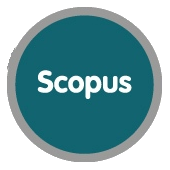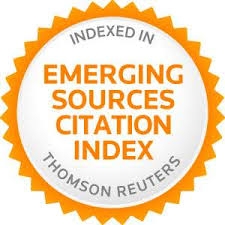Design and validation of an evaluation questionnaire of clinical supervision
Resumen
Clinical supervision in medicine is a mode of teaching in the service that pursues as an end the independent practice of the medical profession. In clinical supervision, the teacher assumes a role modeling student performance in a context of real professional practice. The goal of this article is to report the research process that allowed the development of a questionnaire of formative evaluation of clinical supervision based on the opinion of the students. The method consisted of three empirical studies. (i) a process of exploration of the context of clinical supervision that was achieved through documentary analysis and semi-structured interviews; (ii) the design of the formative evaluation questionnaire for clinical supervision in medicine, which required the identification in the literature of the domains of clinical supervisors define an instrument planning matrix, submit the planning matrix to content validation by experts, a pilot study and a content validation process of the items; and (iii) a third study to generate validity and reliability evidences. The results revolve around the construction of a formative evaluation questionnaire of clinical supervision that allows valid and reliable interpretations. The evidence generated in the research confirm that the evaluation of the teaching competences, regardless of the context, requires consider the didactic planning, the conduction of the teaching process itself and the evaluation of the learning of the students.
Palabras clave
Referencias
Cruess, S., Cruess, R., & Steinert, Y. (2008). Role modeling-making the most powerful teaching strategy. British Medicine Journal, 336: 718-721. doi: https://doi.org/10.1136/bmj.39503.757847.BE
Durante, E. (2006). Algunos métodos de evaluación de las competencias: escalando la pirámide de Miller. Revista Hospital Italiano, 26(2), 55-61. Retrieved from http://www.aspefam.org.pe/intranet/CEDOSA/metodo%20de%20evaluacion%20minicex.pdf
Epstein, R. (2007). Assessment in medical education. New England Journal of Medicine, 356(4): 387-396. doi: https://doi.org/10.1056/NEJMra054784
Falender, C. A. & Shafranske, E. P. (2004). Clinical supervision a competency-based approach. Washington, DC: American Psychological Association. doi: https://doi.org/10.1037/10806-000
Fluit, C., Bolhuis, S., Grol, R., Laan, R. & Wensing, M. (2010). Assessing the Quality of Clinical Teachers. Journal of General Internal Medicine, 25(12), 1337–1345. doi: https://doi.org/10.1007/s11606-010-1458-y
Fornells-Vallés, J. (2009). El ABC del Mini-CEX. Educación Médica, 12(2), 83-89. doi: https://doi.org/10.4321/S1575-18132009000300004
García-Cabrero, B., Loredo, J., Luna, E. & Rueda, M. (2008). Modelo de evaluación de competencias docentes para la educación media y superior. Revista Iberoamericana de Evaluación Educativa, 1(3) 124-136.
Gómez, V., Rosales, S. & Vázquez, J. (2014). Validez y consistencia de un instrumento para evaluar la práctica docente en clínica médica de pregrado. Revista Educación y Desarrollo, 28(19), 15-20. Retrieved from http://www.cucs.udg.mx/revistas/edu_desarrollo/anteriores/28/028_Gomez.pdf
Health and Human Services. (s/f). Competencies for substance abuse treatment clinical supervisors. Retrieved from https://store.samhsa.gov/shin/content/SMA12-4243/SMA12-4243.pdf
Hore, C. T., Lancashire, W. & Fassett, R. G. (2009). Clinical supervision by consultants in teaching hospitals. Medical Journal of Australia, 191(4). Retrieved from https://www.mja.com.au/journal/2009/191/4/clinical-supervision-consultants-teaching-hospitals
Irby, D. (1994). What clinical teachers in medicine need to know? Acad Med, 69(5), 333–342. Retrieved from http://www.ncbi.nlm.nih.gov/pubmed/8166912
Jochemsen-Van der Leeuw, R., Van Dijk, N., Van Ettern-Jamaludin, F., & Wieringa-de Waard, M. (2013). The attributes of the Clinical trainer as role model: A systematic review. Academic Medicine, 88(1): 26-34. doi: https://doi.org/10.1097/ACM.0b013e318276d070
Kennedy, T., Regehr, G., Baker, R., & Lingard, L. (2005). Progressive independence in clinical training: a tradition worth defending? Academic Medicine, 80(10): 106-111. Retrieved from http://www.ncbi.nlm.nih.gov/pubmed/16199447
Kilminster, S. & Jolly, B. (2000). Effective supervision in clinical practice settings: a literature review. Medical education, 34(1): 827-840. doi: https://doi.org/10.1046/j.1365-2923.2000.00758.x
Lawshe, C. H. (1975). A quantitative approach to content validity. Personnel Psychology, 28(1): 563-575. doi: https://doi.org/10.1111/j.1744-6570.1975.tb01393.x
Levy, J., Varela, J., & Abad, J. (2006). Modelización con estructuras de covarianzas en ciencias sociales: temas esenciales, avanzados y aportaciones especiales. España: Netbiblo.
Lifshitz-Guinzberg, A. (2012). La enseñanza clínica en la era moderna. Revista de Investigación en Educación Médica, 1 (04). Retrieved from http://riem.facmed.unam.mx/sites/all/archivos/V1Num04/08_AR_LA_ENSENANZA_DE_LA_CLINICA.PDF
Miller, G. (1990). The assessment of clinical skills/competence/performance. AcadMed; 65(Suppl.): S63-S67. doi: https://doi.org/10.1097/00001888-199009000-00045
Milne, D. Aylott, H. Ftzpatrick, H. & Ellis. M. (2008). How does clinical supervision work? Using a “best evidence synthesis “Approach to construct a basic model of supervision. The Clinical Supervisor, 27(2) 170-190. doi: https://doi.org/10.1080/07325220802487915
Paice, E., Heard, S., & Moss, F. (2002). How important are role models in making good doctors? British Medicine Journal, 325 (1): 707-710. doi: https://doi.org/10.1136/bmj.325.7366.707
Santana, L., Lifshitz-Guinzberg, A., Castillo, J. & Prieto, S. (2013). El aprendizaje de la clínica. México. Retrieved from http://www.fundacionlegadopatronus.org/libro.pdf
Schumacher, D., Bria, C. & Frohna, J. (2013). The quest toward unsupervised practice: Promoting autonomy, not independence. The Journal of American Medical Association, 310(24), 2613–2614. doi: https://doi.org/10.1001/jama.2013.282324
Tristán, A. (2008). Modificación al modelo de Lawshe para el dictamen cuantitativo de la validez de contenido de un instrumento objetivo. Revista de Avances en Medición, 6(1): 37-48. Retrieved from http://www.humanas.unal.edu.co/psicometria/files/8413/8574/6036/Articulo4_Indice_de_validez_de_contenido_37-48.pdf
Enlaces refback
- No hay ningún enlace refback.


